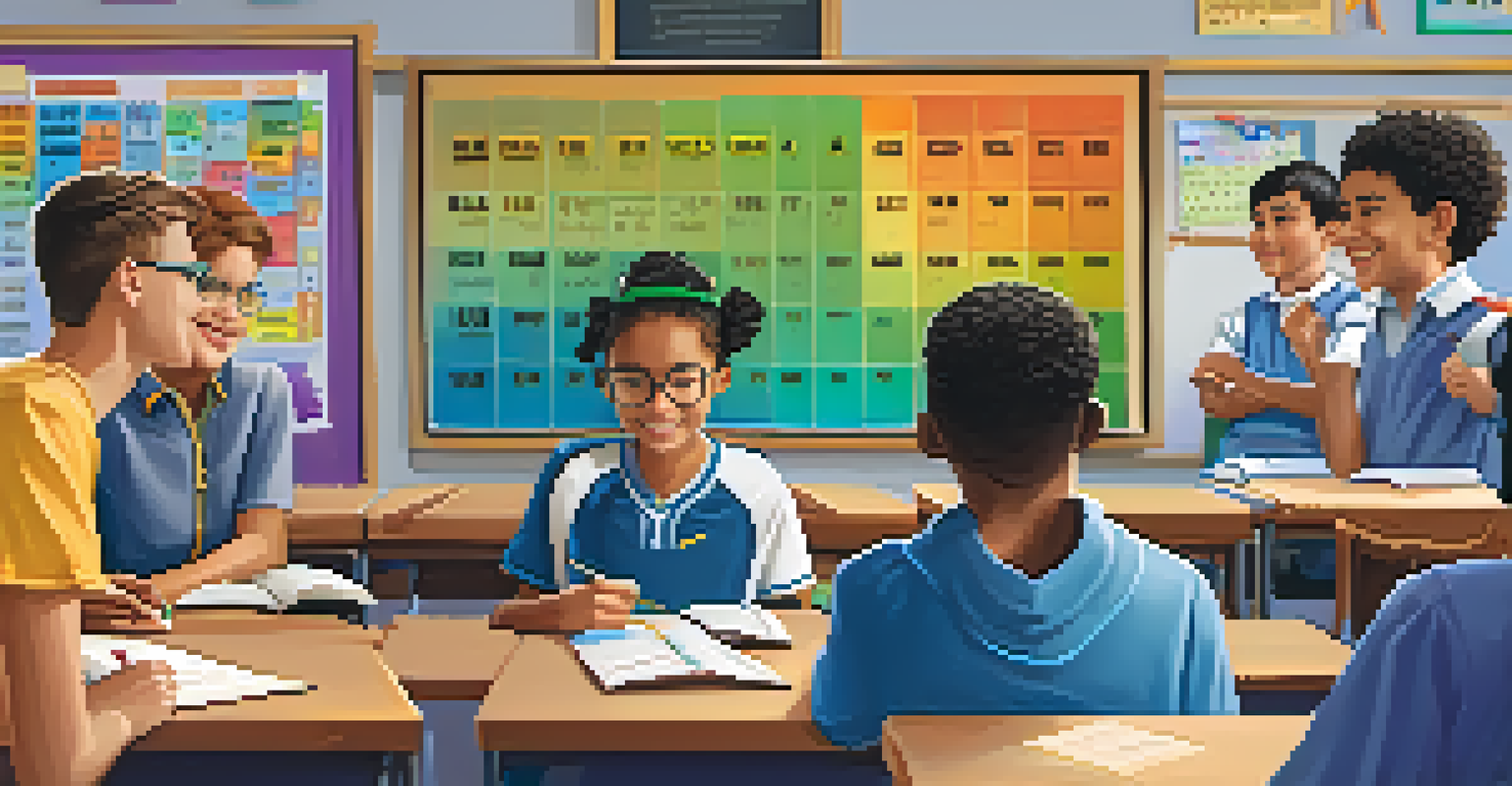Strategies for Maintaining Student Motivation in Blended Learning

Understanding Blended Learning and Its Challenges
Blended learning combines traditional face-to-face instruction with online learning. This approach can energize classrooms but also presents unique challenges, especially regarding student motivation. Many learners may struggle with the shift to self-directed online tasks, which can lead to feelings of isolation and disengagement.
Education is not the filling of a pail, but the lighting of a fire.
To combat these challenges, educators must recognize that maintaining motivation in blended learning is crucial for success. Understanding the nuances of this learning model is the first step towards creating strategies that keep students engaged. It’s essential to foster an environment where students feel connected and supported, both online and offline.
For instance, consider a student who thrives in a collaborative setting. By integrating group projects that require both in-person and virtual collaboration, educators can tap into students' social motivations while reinforcing the importance of teamwork in a blended format.
Setting Clear Expectations for Students
One of the most effective strategies for maintaining motivation is to set clear expectations from the outset. When students know what is expected of them—both in terms of academic performance and participation—they are more likely to stay focused and committed. This clarity helps eliminate ambiguity that can lead to frustration and disengagement.

For example, providing a detailed syllabus that outlines deadlines, grading criteria, and participation requirements can significantly enhance student understanding. Regular check-ins and updates can also reinforce these expectations, ensuring that students remain on track. This structured approach helps students feel more secure in their learning journey.
Motivation is Key in Blended Learning
Maintaining student motivation is crucial for success in blended learning environments, as self-directed tasks can lead to feelings of isolation.
Moreover, involving students in the goal-setting process can further boost motivation. When learners have a say in what they aim to achieve, they are often more invested in reaching those goals, creating a sense of ownership over their education.
Incorporating Interactive and Engaging Content
Engaging content is vital in a blended learning environment. Students are more likely to remain motivated when they find the material interesting and relevant to their lives. Utilizing a variety of multimedia resources—such as videos, podcasts, and interactive quizzes—can cater to different learning styles and keep students engaged.
The only way to do great work is to love what you do.
For instance, a history lesson could incorporate virtual reality experiences that transport students to historical events. This not only makes learning fun but also helps students connect emotionally with the material, enhancing retention and understanding. The novelty of interactive content can reignite curiosity and motivate students to delve deeper into their studies.
Additionally, encouraging students to create their own content, like presentations or blogs, can further stimulate engagement. When students take on the role of creators, they gain a deeper understanding of the subject matter and feel more invested in their learning.
Fostering a Supportive Online Community
Creating a supportive online community is essential for maintaining student motivation in blended learning. This involves establishing channels for communication where students can share ideas, ask questions, and provide feedback. Online forums, discussion boards, and social media groups can facilitate this interaction, helping students feel less isolated.
For example, integrating regular virtual meetings or study groups can help students connect. These gatherings create a sense of belonging and encourage collaboration, which is vital for motivation. When students know they have peers to rely on, they’re more likely to stay engaged with the material.
Interactive Content Engages Students
Utilizing multimedia resources and encouraging content creation can make learning more engaging and relevant for students.
Moreover, instructors should also actively participate in these online communities. By engaging with students, answering questions, and providing encouragement, educators can create a positive atmosphere that reinforces motivation and commitment to learning.
Utilizing Gamification to Boost Engagement
Gamification is a powerful tool for enhancing student motivation in blended learning environments. By incorporating game-like elements—such as points, badges, and leaderboards—educators can create a more dynamic learning experience. This approach taps into students' competitive nature and can make learning feel more like a fun challenge rather than a chore.
For example, an online course could include weekly challenges where students earn points for completing assignments or participating in discussions. This not only incentivizes participation but also fosters a sense of achievement as students track their progress. Gamification can transform mundane tasks into exciting opportunities for learning.
Additionally, incorporating storytelling elements can further enhance the gamified experience. When students feel they are part of a larger narrative, they are often more inclined to engage deeply with the content and strive for success.
Providing Timely Feedback and Recognition
Timely feedback is crucial for keeping students motivated in blended learning settings. When learners receive constructive feedback on their work, they gain insights into their progress and areas for improvement. This ongoing dialogue not only helps students stay on track but also reinforces their sense of accomplishment.
For instance, using digital tools to provide quick assessments and feedback can create a more responsive learning environment. Students appreciate knowing how they are performing and what steps they can take to improve. Recognizing their efforts, whether through grades, comments, or shout-outs in class, can further boost their motivation.
Fostering Online Community Matters
Creating supportive online communities and encouraging collaboration helps students feel connected, enhancing their motivation and engagement.
Moreover, celebrating milestones—big or small—helps to maintain enthusiasm. Whether it's completing a challenging assignment or participating actively in discussions, acknowledging these achievements can motivate students to continue striving for success.
Encouraging Self-Directed Learning Skills
Encouraging self-directed learning skills is essential in blended learning environments. As students navigate both online and offline resources, they need to develop the ability to manage their time effectively and take responsibility for their learning. Teaching these skills not only empowers students but also enhances their motivation.
For example, providing resources and tools for time management—like planners or apps—can help students organize their study schedules. When they feel in control of their learning, they are more likely to remain engaged and motivated. Additionally, promoting goal-setting strategies can guide students in identifying their learning objectives and monitoring their progress.

Furthermore, encouraging reflection on their learning experiences can also foster self-direction. When students take time to assess what strategies worked for them and what didn’t, they become more adept at adjusting their learning approaches, leading to greater motivation and success.